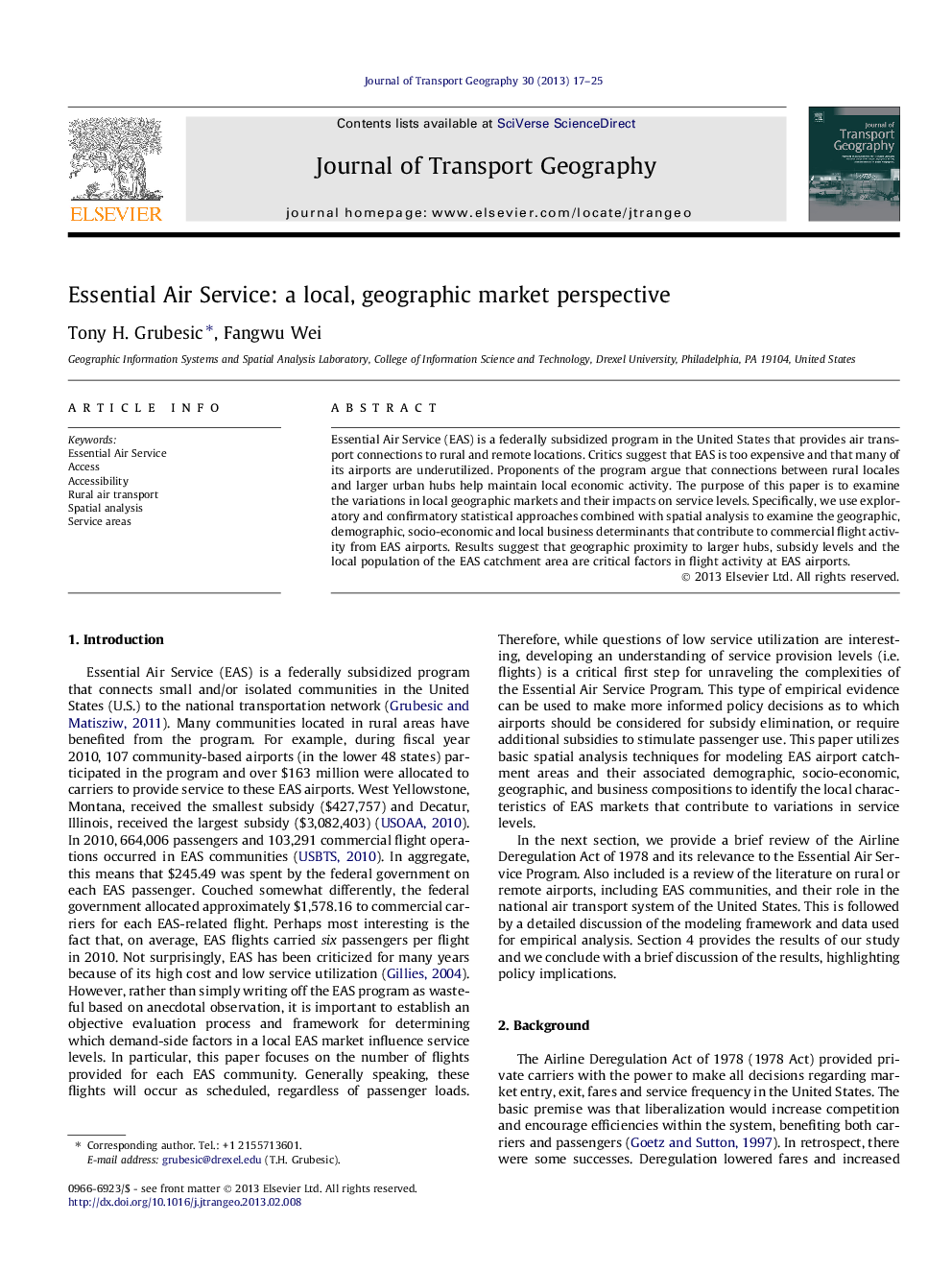| Article ID | Journal | Published Year | Pages | File Type |
|---|---|---|---|---|
| 1059353 | Journal of Transport Geography | 2013 | 9 Pages |
Essential Air Service (EAS) is a federally subsidized program in the United States that provides air transport connections to rural and remote locations. Critics suggest that EAS is too expensive and that many of its airports are underutilized. Proponents of the program argue that connections between rural locales and larger urban hubs help maintain local economic activity. The purpose of this paper is to examine the variations in local geographic markets and their impacts on service levels. Specifically, we use exploratory and confirmatory statistical approaches combined with spatial analysis to examine the geographic, demographic, socio-economic and local business determinants that contribute to commercial flight activity from EAS airports. Results suggest that geographic proximity to larger hubs, subsidy levels and the local population of the EAS catchment area are critical factors in flight activity at EAS airports.
► Variations in service levels for the EAS program in the U.S. are investigated. ► Service levels increase when airports are geographically isolated. ► Industries commonly aligned with business travel do not influence service levels.
